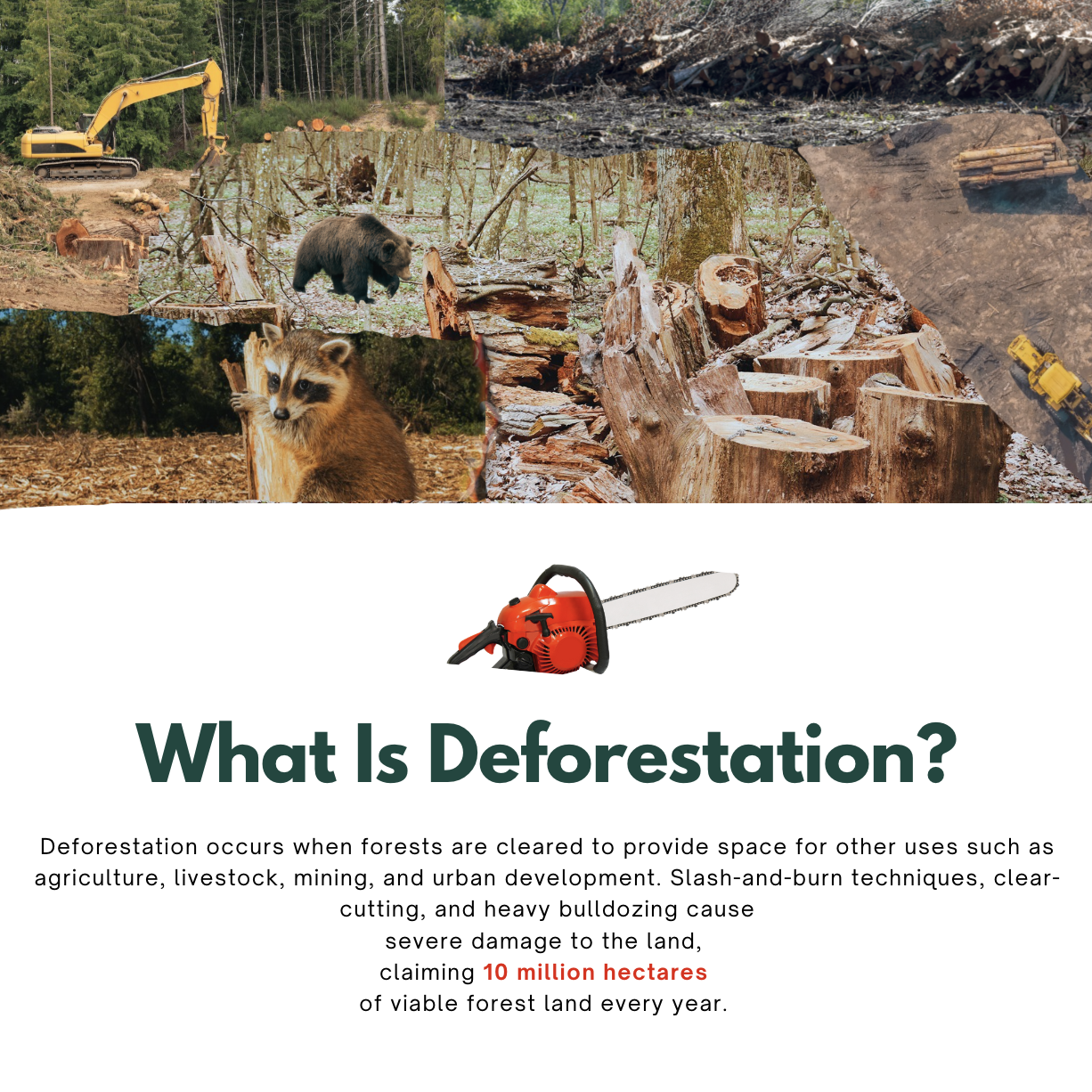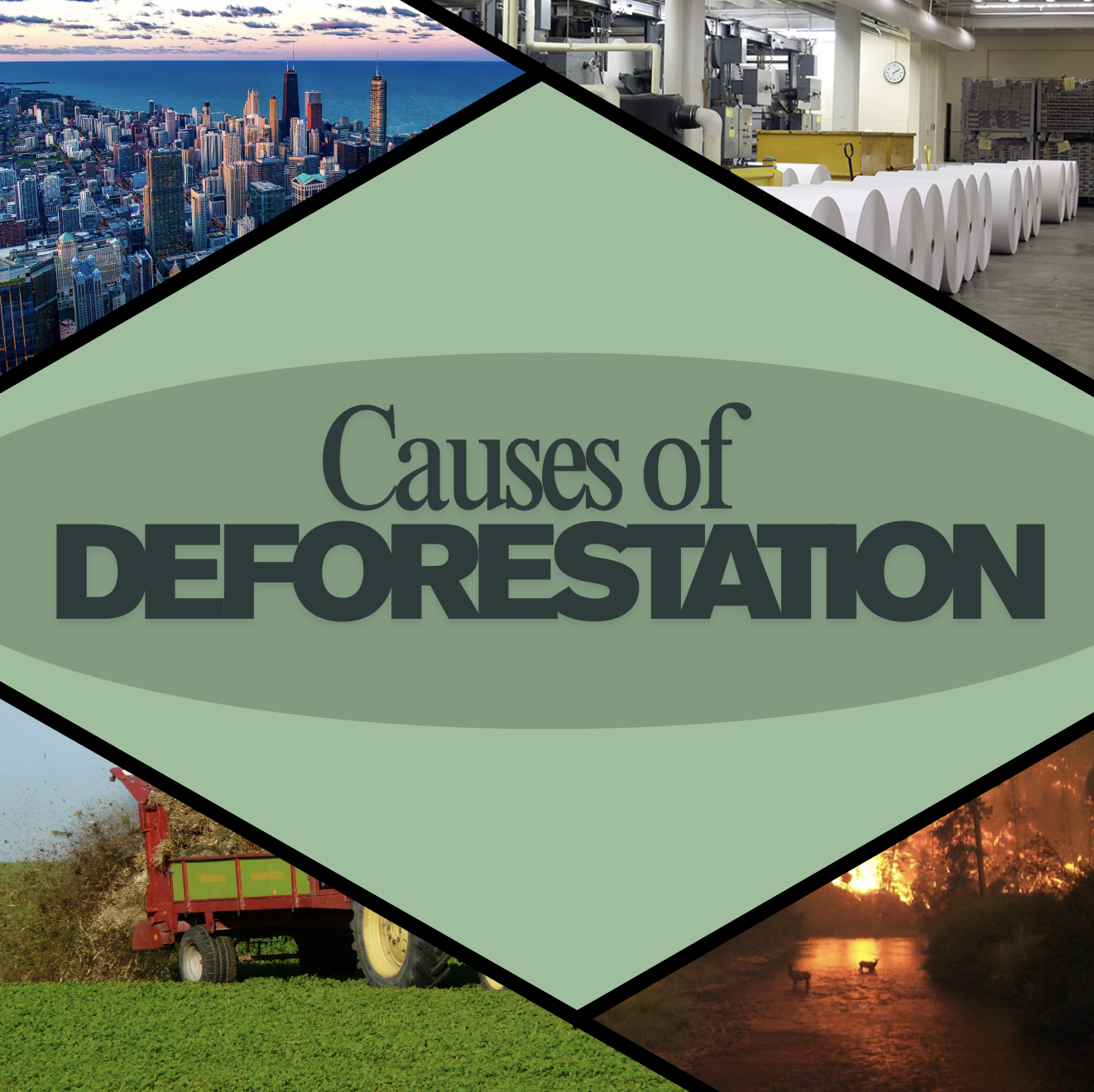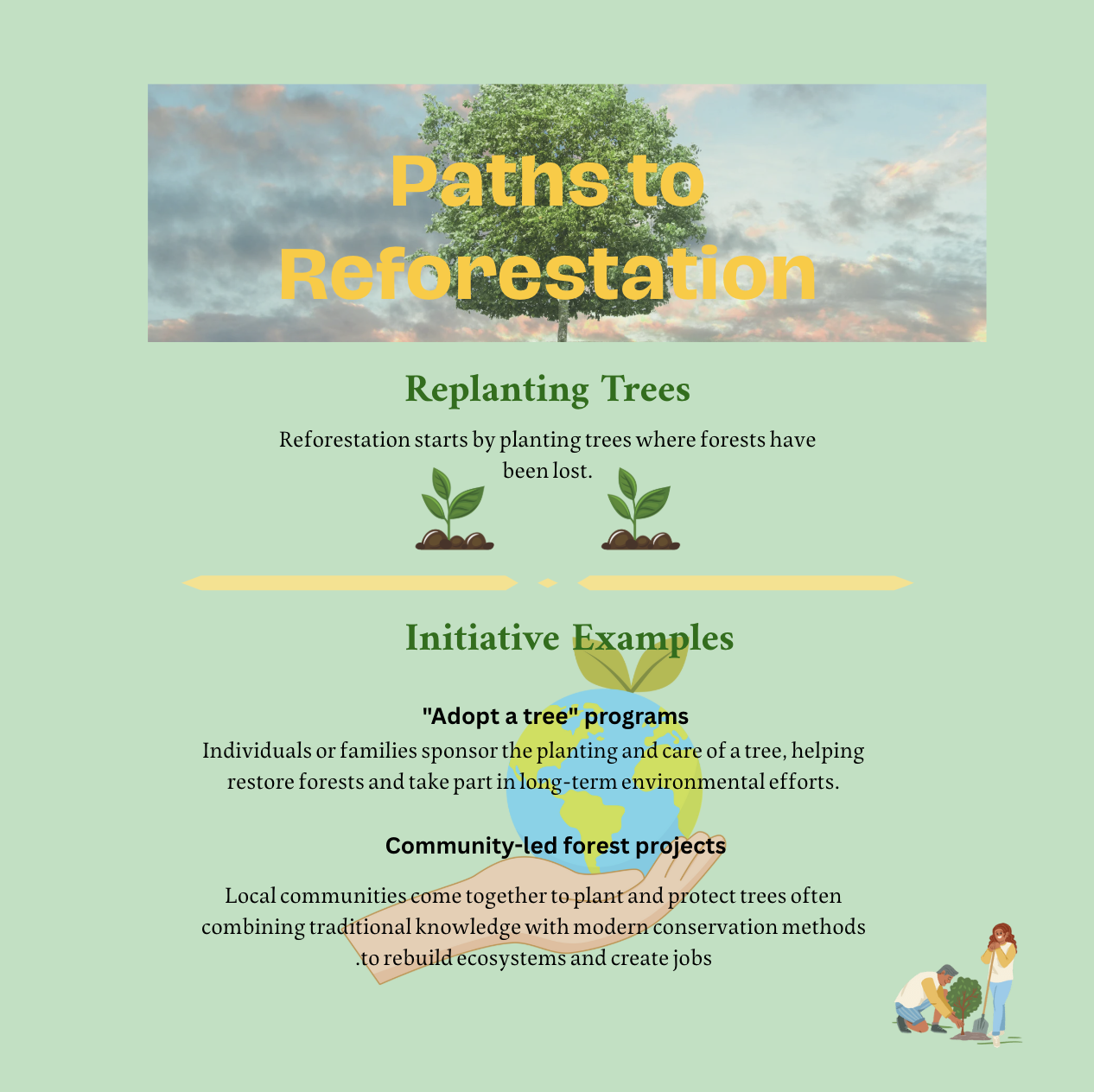Ch 8: Breaking the Balance of Nature
Deforestation
Written and designed by volunteers: Amani, Senali, Jodha, Mikaella, and Maryem
What is Deforestation?
The process of removing trees to allow for industrial and human expansion is known as deforestation. As the human population grows, more forests are cleared each year, often at the expense of our own futures. To protect the livelihoods of 250 million people and 80% of land wildlife that occupy these regions, it is important for us to recognize he dangers posed by deforestation.
The Causes of Deforestation
City expansion, paper production, fires, and commercial farming are major drivers of deforestation. Forests are cleared to make room for growing cities, while the paper industry cuts down millions of trees each year for products like notebooks and packaging. Fires, often set intentionally to clear land, destroy huge areas of forest. Commercial farming removes forests to grow crops such as soy or palm oil, or to raise cattle on a large scale. All of these activities lead to the loss of trees that help clean the air, regulate the climate, and support wildlife, making deforestation a serious threat to the health of our planet.
The Effect on the Ecosystem
Deforestation leads to multitudes of damage within ecosystems. It leads to biodiversity loss, as plants and animals lose their natural habitats. The removal of trees disrupts the carbon cycle—the release of carbon dioxide within the atmosphere contributes to climate change. Without the stabilization of trees to soil and filter water, land is prone to erosion and waterways become polluted. Protecting the forests and preventing deforestation are essential for maintaining a healthy ecosystem and a stable climate.
Paths to Reforestation
Reforestation can take many forms, from individual efforts to community-wide initiatives. One common path is through "Adopt-a-tree" programs, where individuals or families sponsor the planting and care of a tree playing a direct role in restoring lost forests and supporting long term environmental goals. Another powerful approach is through community led forest projects, in which local communities unite to plant and protect trees. These initiatives often blend traditional knowledge with modern conservation practices, helping not only to rebuild ecosystems but also to create sustainable job opportunities. Together, these efforts highlight how both individuals and groups can actively participate in healing the planet through reforestation.




